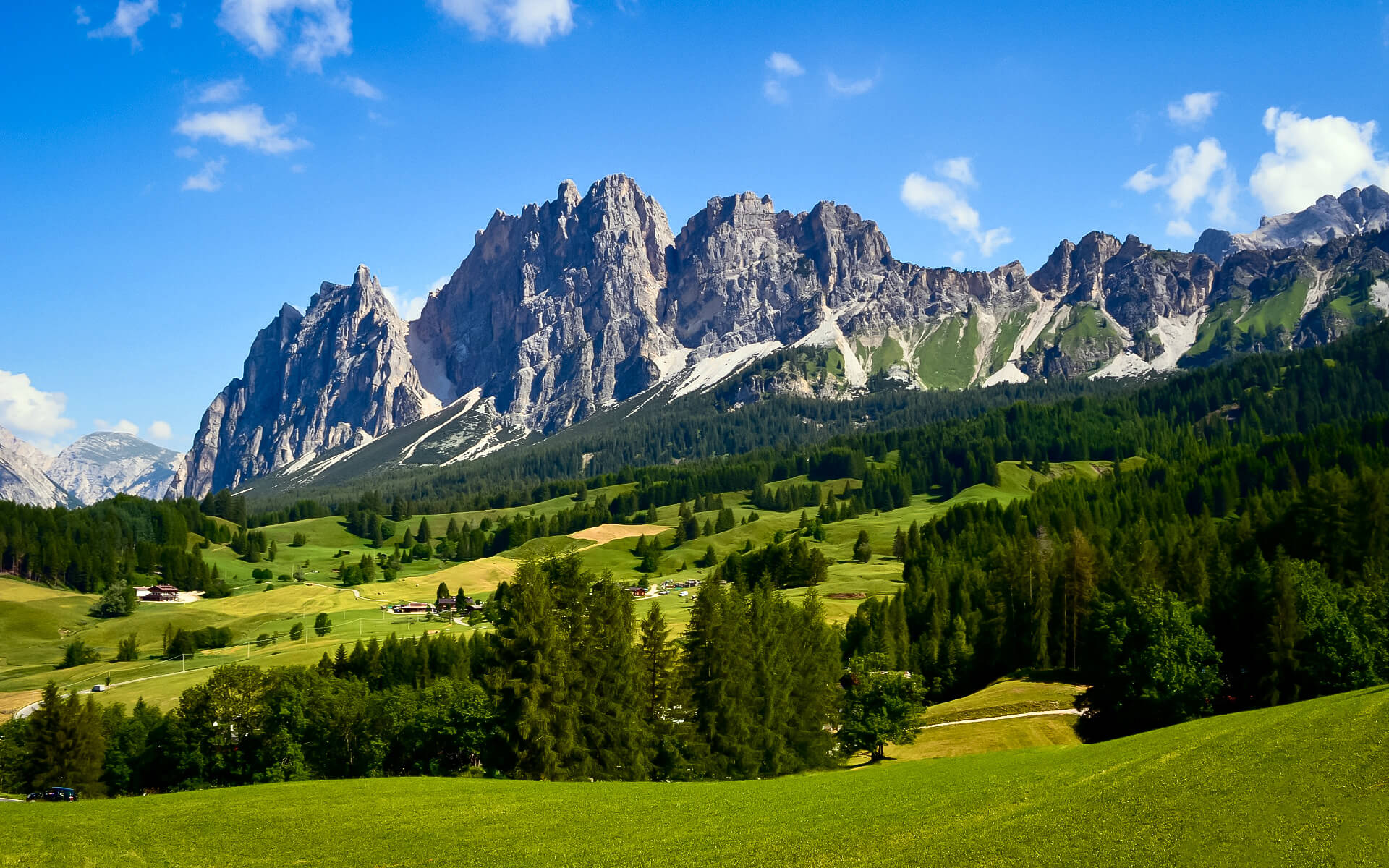Cortina d’Ampezzo, often known as the Queen of the Dolomites and the Mecca of Italian celebrities, is the country’s top ski resort. It is a prominent winter sport destination noted for its skiing slopes, scenery, hotels, stores, and après-ski scene, as well as its jet set and aristocratic European audience, located on the Boite river in an alpine valley.
There is some of the most breathtaking scenery in the ski world, as well as superb atmosphere in a typically Italian setting, with shops, cafés, restaurants, and hotels to match the finest. Cortina is also a very beautiful town with a plethora of non-skiing activities. This is a totally different form of resort from the majority of the Dolomites, which have been significantly affected by their previous owners, the Austrians/Hungarians. Cortina is the epitome of Italian elegance. Many Italians do not even go to ski there. It’s a place to march, shop, and, most importantly, eat. Lunch is a significant occasion here, and the slopes are deserted after 2 p.m. Many of the Mountain eateries are accessible by road, so the fur coat crowd arrives early and spends the day sunning and scrolling through their phones.
The Ampezzo region is a “dream come true” for skiers and snowboarders of all ability levels, with 120 kilometers of slopes spread over various mountains. The region is showered in sunlight all year thanks to its scenic position in the Italian southern Alps, with blue skies eight days out of ten. And, just in case the white stuff is scarce, 95 percent of the routes may be artificially created if necessary. As a consequence, ideal circumstances are almost ensured.
The ski areas in the Ampezzo region include Faloria – Cristallo – Mietres, Tofana, and Lagazuoi – 5 Torri. Faloria – Cristallo – Mietres has a total of 24 runs, five of which are black-rated, eleven of which are red, and eight of which are blue. The Forcella Staunies chairlift transports skiers to a reasonable height of 2,930 meters and rewards tourists with breathtaking views of the Ampezzo valley. Mietres’ gentle slopes are a perfect playground for families with children.
Most routes at Tofana are graded blue or green (quite easy), although the Tofana Express chairlift connects to more difficult runs, such as the famed Canalone. On the Olympia ski trip, you may walk in the footsteps of the Olympians from 1956. Expert skiers will be hard pressed to find a black-marked run at Lagazuoi, since all of the slopes are relatively simple blue or red-marked affairs. As a consequence, this region is best suited for those who want to perfect their skiing in quiet or who appreciate the benefits of relaxed carving.
The Cortina terrain park has everything a freestyler needs to have a good day. The park is 500 meters long and has a 4-person chairlift as well as two distinct zones: The simple line is intended for children and unskilled freestyle skiers, and it has four jumps, a box, and a ground rail. If you already have some experience, try the medium line, which includes a super box kink, a T-box, a pipe, a bonk-wall, and a tree bonk.
Cortina d’Ampezzo is also a part of Dolomiti Superski, the world’s biggest ski area. This region includes twelve Italian ski slopes with a total of 1,220 kilometers of lines and 450 lifts.
Cortina’s reputation for everything else first, and skiing second, may have as much to do with relaxed Italian attitudes toward skiing as it does with the quality of what’s on offer: when they go on vacation, Italians want good food, plenty of socializing, sunbathing, and of course, some great skiing. For ski-obsessed northern Europeans, this means that the slopes are essentially vacant in the early morning, lunchtime, and late afternoon for much of the season.
There’s little doubt you’re in Italy when you’re in Cortina’s pedestrian town center. The fur on the walking visitors outnumbers the fur on the local fauna, and cafés and wine bars, rather than boisterous après-ski pubs, perform well. Wherever you go, you’ll find excellence, and although there are plenty of places to spend your money, there’s also terrific value here.


